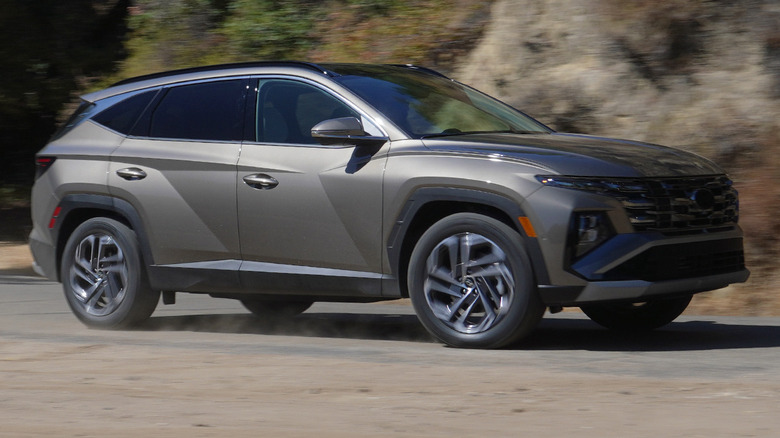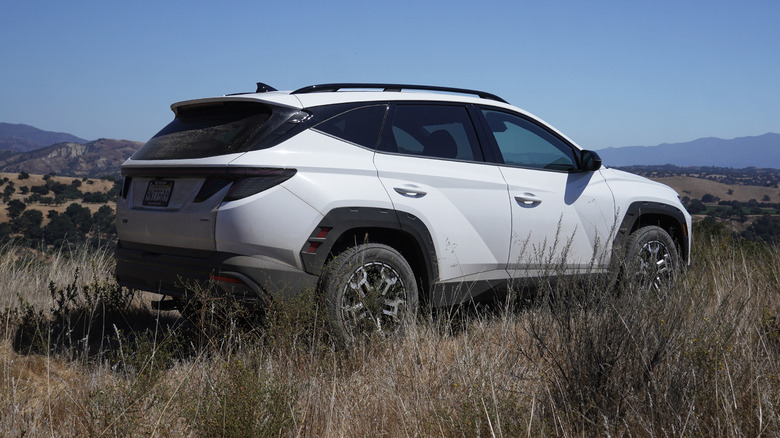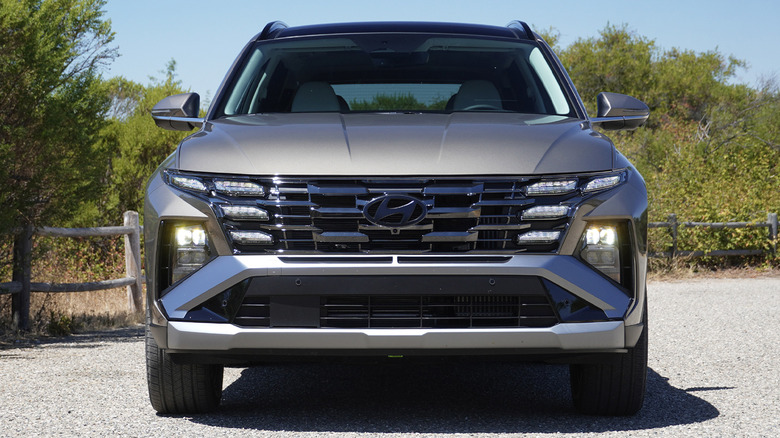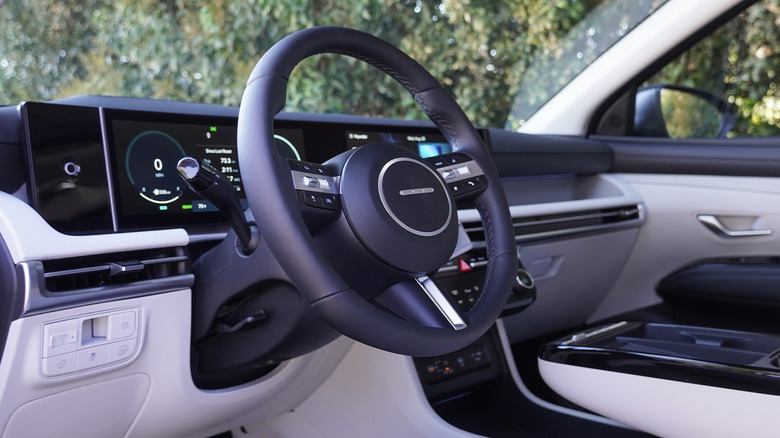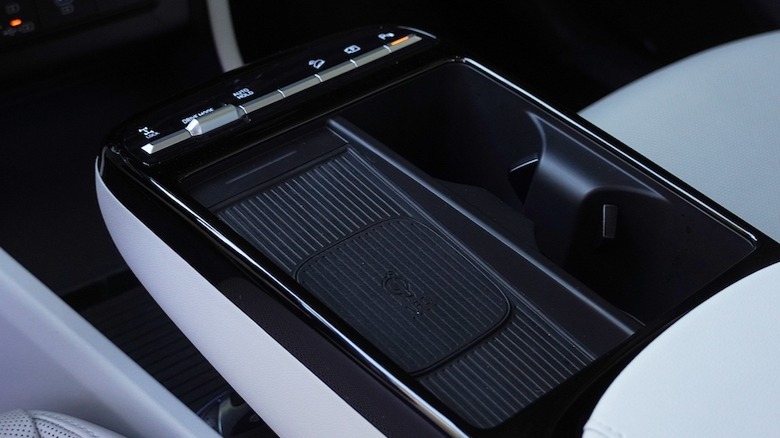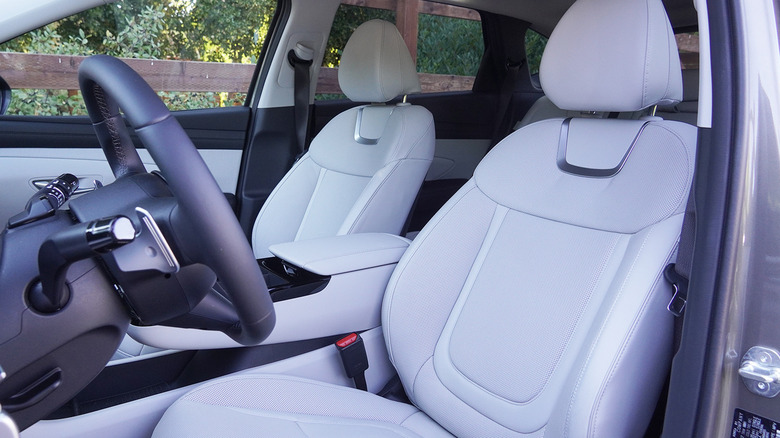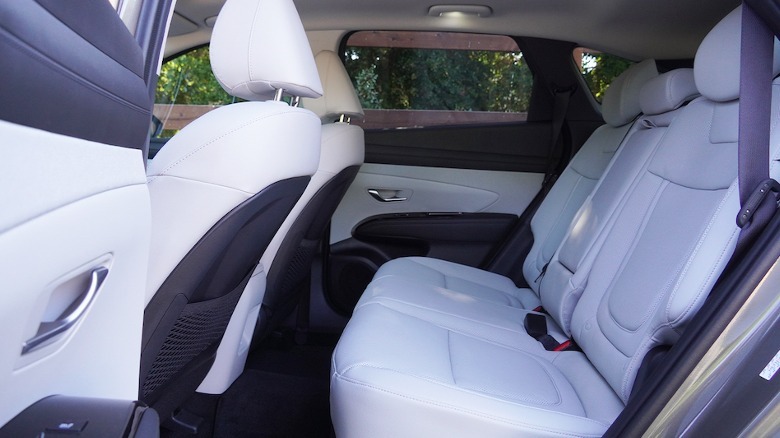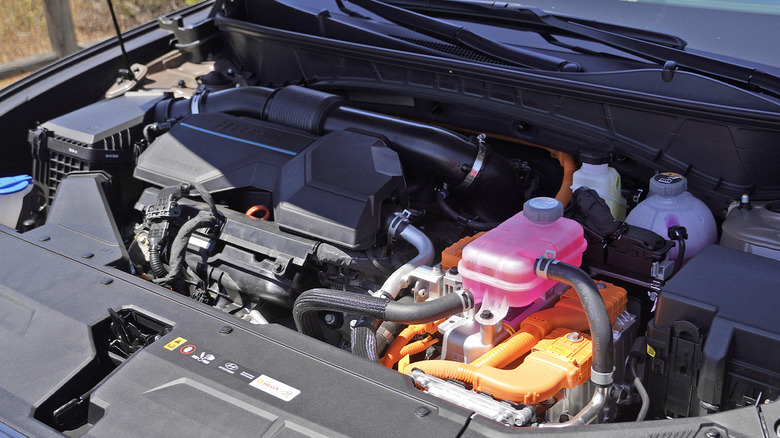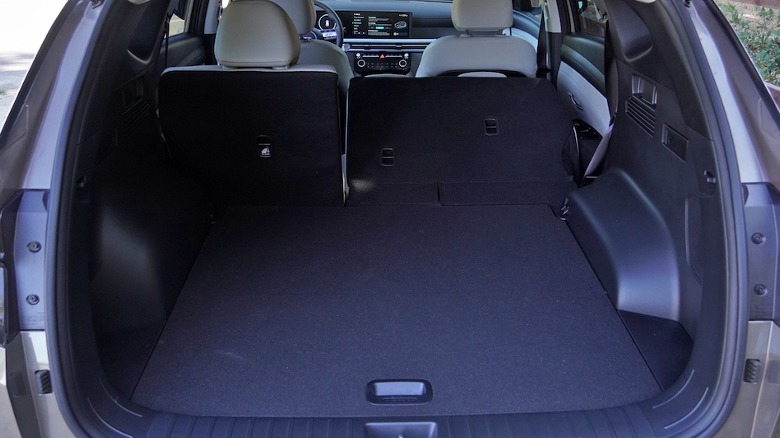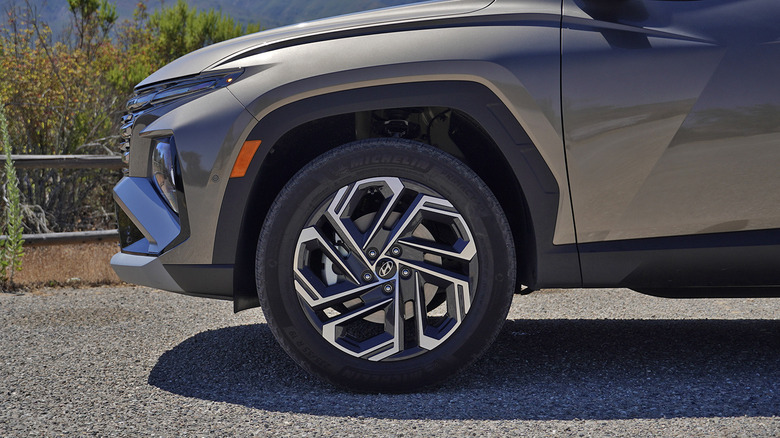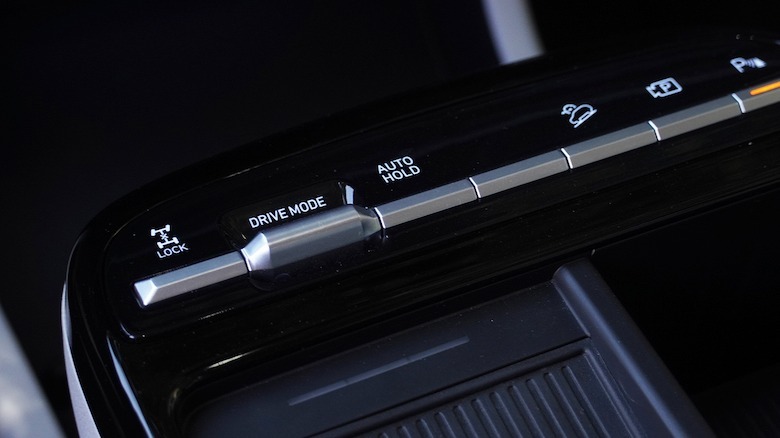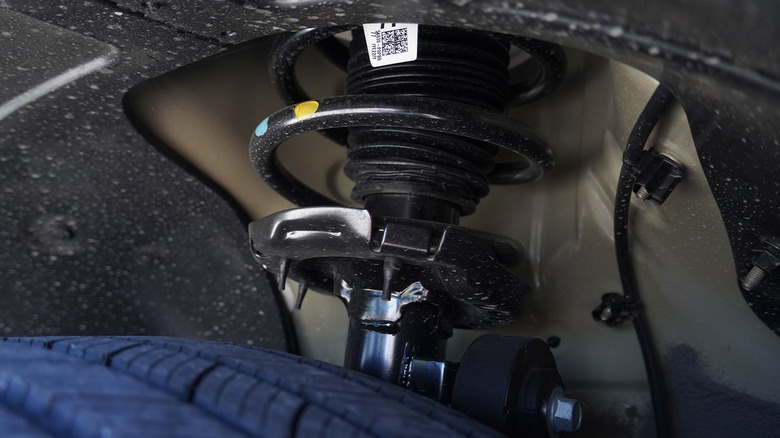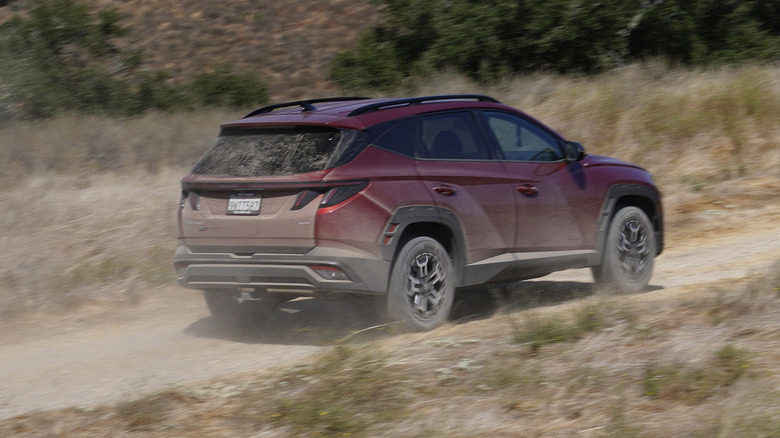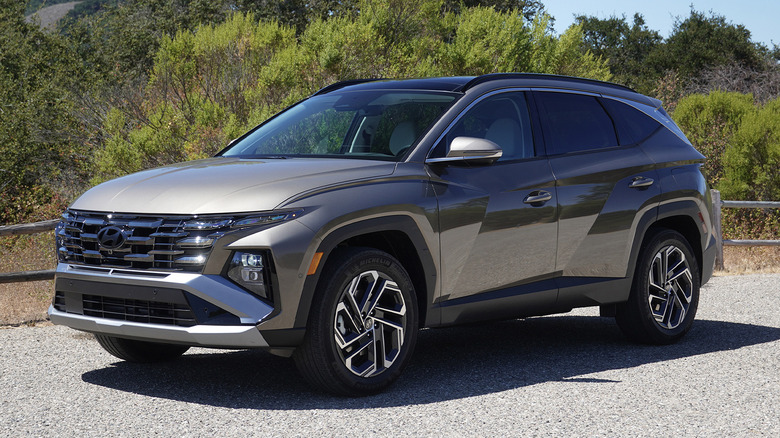2025 Hyundai Tucson First Drive: The Updates We Wanted And A Hybrid You Might Not Need
Hyundai's increasingly popular Tucson will receive a mid-cycle facelift for model year 2025, and while telling the difference between an early and late fourth-generation Tucson from the outside probably requires seeing two parked directly next to each other, the total combination of updates actually make for a fairly significant makeover. The aero strakes that Hyundai loves to play with on Elantra and Tucson remain the same, but the front end gets a touch more blocky and bold.
More importantly, the 2025 Tucson's interior takes a big step in the right direction, including the long-awaited addition of wireless Apple CarPlay and Android Auto. Alongside the enhanced smartphone connectivity, the entire dash and center console also received extensive attention to help keep up with the competition. Hyundai invited me to a media drive program in Los Olivos, California, to experience how much a batch of updates can make an actual difference while living with this Korean compact crossover.
A Tuscon for every crossover buyer
The day in Los Olivos turned into quite a long one, actually, and not just because the Tucson offers fully 16 different trim and powertrain combinations. More to come from Hyundai at a later date to say the least—secrets secrets—and, in full disclosure, I didn't get a chance to drive every last Tucson package. Instead, the highlights included an all-wheel-drive hybrid at the Limited trim level, and an off-roady XRT with the internal-combustion engine.
Hyundai declined to provide any of the plug-in-hybrid Tucsons for review, possibly because the base gas-powered Tucson SE FWD starts at $28,355 while a PHEV AWD caps out at almost double the starting sticker, or $47,090. And 2025 will be all about pulling the lower end of the lineup up by its proverbial bootstraps.
Front end revisions for 2025
The front end revisions will noticeably stand out for anyone who appreciates Hyundai's signature daytime running lights, which now transform into more of a boxy pattern. The lower edge of the front grille also bolsters the more blocky or, to an extent, rugged aesthetic—almost akin to half of the mustachioed 2025 Toyota 4Runner, in fact.
To my eye, the new lights especially leave a bit on the table, since I felt the luxurious and lightening effect (pun fully intended) of the previous design more accurately represented Hyundai's goals in the segment.
Luxury and lightening definitely continue as themes on the revamped interior, though, and in the best of ways. Topping the dash, a new 12.3-inch touchscreen serves as the main highlight thanks to the inclusion of wireless Apple CarPlay and Android Auto, and the native UI also works quickly and for the most part intuitively. Only the most obscure functions require dipping into deep menus. The rest of the dashboard also transitions to a more horizontal layout, including a little parcel shelf in front of the passenger seat and a matching 12.3-inch gauge cluster (though lower trims still get what Hyundai calls a "multi-info" screen measuring just 4.2-inches diagonally, along with regular gauges).
A revamped interior makes the biggest difference
On most trims, the gearshifter also scoots over to the steering column. Hyundai's shift-by-wire gearshifter — as on the new Santa Fe – is one of my favorites in the modern era, a time period when somewhere along the way someone decided that every single car company needed to reinvent something that never needed reinventing in the first place. At least Hyundai kept things relatively simple, twist forward to go forward and back for reverse, and pop the button on the end of the stalk to park.
Almost as importantly, moving the shifter frees up space on the center console for a super-convenient smartphone charging pad. And I suspect this might be the best layout from any designer I've seen yet, one that concedes exactly how much everyone grabs their phones about a million times per hour while driving—so let's make it easy to pick up and put down rather than creating additional distraction factor with ridiculous storage locations, right? And the climate control still uses physical buttons, too!
Roomy and now technologically competitive
The total result of interior design updates arrives just at the right moment, transforming the Tucson into an almost luxurious crossover that still occupies fairly budget-friendly pricing before piling on options. Of course, material choices for some touchpoints break into the reverie, but otherwise my time spent in the Hybrid AWD Limited definitely felt more serene than expected.
I attribute plenty of the comfort level to the Tucon's longest wheelbase in class, at 108.5 inches, which allows for more interior space. At 6'1" with long legs, I fit in the front seat just fine and even in the backseat without feeling cramped. Plus, the fronts feature some of the best cooling ventilation I've ever experienced—my very favorite development in automotive technology of the past few decades.
Three powertrain options carry over for the 2025 Tucson
Not all the tech helps, though, and the Tucson also struggled with an eye-tracking camera on the top of the steering column that's meant to detect fatigue and driver distraction. Unfortunately, almost at Toyota and Lexus levels of frustration, the system struggled when I put on sunglasses (which was all the time in sunny SoCal) and then turned off cruise control because I supposedly wasn't watching the road. Cruise control has been around for more than just a few decades, and bright sunlight makes me sleepy, so wearing sunglasses took priority to giving my right foot a break. A fairly big bummer, to say the least.
The drive program through sunny SoCal afforded media a chance to experience the Tucson's internal-combustion engine, a little turbocharged 2.5-liter mill capable of routing 187 horsepower and 178 lb-ft of torque to the front or all four wheels through an eight-speed automatic. Stepping up to the hybrid drops displacement down to 1.6 liters, but an e-motor now contributes 64 ponies for combined ratings of 231 horsepower and 271 lb-ft. The PHEV, which I did not drive, cranks out more from the e-motor to allow for up to 268 horsepower and 271 lb-ft of torque, plus 32 miles of all-electric range.
Fiddling with drive modes
The hybrid in which I started out itself powers up in the default "Eco" mode, which in the "Blue" trim allows for up to 38 mpg in the city and 38 on the highway, for a combined rating of—you guessed it—38 mpg. But that kind of impressive fuel economy for a spacious crossover comes at quite a cost, namely that in said-Eco mode, the Tucson with the pedal fully to the metal only just barely ekes out enough power to get up to highway speeds.
The reduced output truly borders on concerning, so I flipped over to Sport mode via the toggle in front of my smartphone charging pad. All of a sudden, the steering firmed up and the throttle response noticeably improved. Turns out, unleashing all 231 horsepower does the trick.
In fact, the steering almost tightens up too much, adding a level of dullness that so many manufacturers must think consumers equate with sportiness. Especially on front-wheel-drive and all-wheel-drive cars, lighter steering can help to improve dynamics and communication to the hands, so I dug into the touchscreen menus to fiddle with the customizable "My Drive" mode which allowed me to pair the lightest steering with the peppiest throttle response.
Sport and capable only goes so far
Doing so helps the steering better match power output, but also the suspension, which Hyundai definitely tuned more toward the ubiquitous "sporty and capable" crossover demographic. Yet the damping lacks a certain level of refinement, no doubt for budgetary considerations, and the chunked-up asphalt of the Santa Ynez valley often bumped and banged into the cockpit as we rocked and rolled down the road.
The suspension continued as a theme when Hyundai rolled out its new Tucsons equipped with the updated XRT package for a few laps around the dirt roads of a sprawling ranch. At least the XRT gets smaller 18-inch wheels so the taller sidewalls can absorb more punishment, though as shod in Kumho Crugen tires—basically city slickers masquerading as all-terrains—actual grip leaves a little to be desired. Hyundai also wanted us to blast through the dirt without airing down, and yet the Tucson XRT absorbed all the punishment and passed only about 85% of the clunks and crashes through to the cockpit.
Enjoying the ICE Tucson
Through real ruts, rather than washboards, the steering yanked around plenty. But on graded gravel, this little soft-roader will do just fine for getting up to a nice fishing spot or a cabin on the lakefront. And I almost preferred the peppy little 2.5-liter gas engine, probably because the lack of hybrid componentry helps to keep the curb weight down toward the lowest 3,529 pounds—versus the PHEV at up to 4,265 pounds. And thanks to the eight-speed, the ICE option can shift around through optimal gear ratios to help prevent from seeming underpowered.
Meanwhile, Hyundai's borderline-hilarious commitment to locking center differentials actually almost makes sense in an XRT. Though of course, for any real off-roading, more legit tires and some better dampers will go a long, long way.
Updated perfectly to keep building market share
In the end, true off-road capability or outright power never fit critically into the Hyundai's overarching plans for the Tucson. And not for the 2025 model year makeover, either. Instead, this latest update aims to provide the right combinations of features and efficiency at the right price. I certainly prefer the Tucson to a RAV4 Hybrid, for example, though the Honda CR-V's smoother exterior design appeals more to my taste. And all of the above are better than Ford's Bronco Sport, to say the least (though we'll have to see how the updated 2025 version holds up).
The question of whether Hyundai can manage to continue attracting more potential buyers into dealerships to actually experience the Tucson matters almost more than 2025's thorough modernization throughout the gradewalk. Those who do will probably discover a compact crossover with the most appealing interior ergonomics and respectable driving dynamics of this increasingly competitive segment. And, though the exterior's minimal alterations may seem relatively restrained, the combined improvements no doubt reveals Hyundai's continued aspirations of world domination, a task that the playful Tucson clearly takes very seriously.
